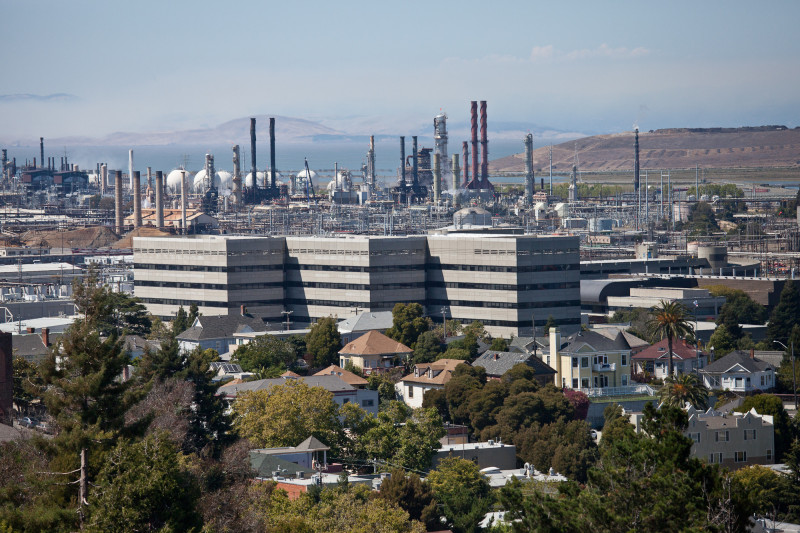"I didn't get any information until the next morning," Butt said. "I'm going to talk to my contacts at Chevron again and remind them that we need to find a way to improve communication."
The most recent flaring at the refinery prompted numerous calls to Richmond dispatchers, according to Fire Chief Adrian Sheppard.
The refinery contacted the Fire Department about the Level 1 incident but did not request help.
"A boiler feed unit pump became inoperable and ... the steam generator needed to be shut down," Sheppard said, adding that the flaring lasted about an hour.
Chevron released few details.
"On April 14, the Richmond Refinery experienced flaring due to equipment failure. As you know, flares are a highly regulated safety device monitored by the air district and used in refineries to safely burn excess gas," Chevron spokeswoman Leah Casey said in an emailed statement.
"We apologize for any concern this caused our neighbors and are pleased there was not offsite impact," Casey said.
The company is declining to release more information about Saturday's malfunction.
"Due to competitive and business reasons, we don't publicly disclose information about our equipment," Casey said.
The incident led to the release of at least 500 pounds of sulfur dioxide. Sulfur dioxide releases higher than 500 pounds must be reported.
The Bay Area Air Quality Management District is investigating the incident.
The district's air monitoring network did not detect elevated levels of sulfur dioxide in the area, but the agency has requested readings from a community monitoring program, according to BAAQMD spokeswoman Lisa Fasano.
The refinery's boilers began coming back online about an hour after the flaring began, according to Gioia.
The units affected by the malfunctions were "stabilized" on Sunday, he said.

